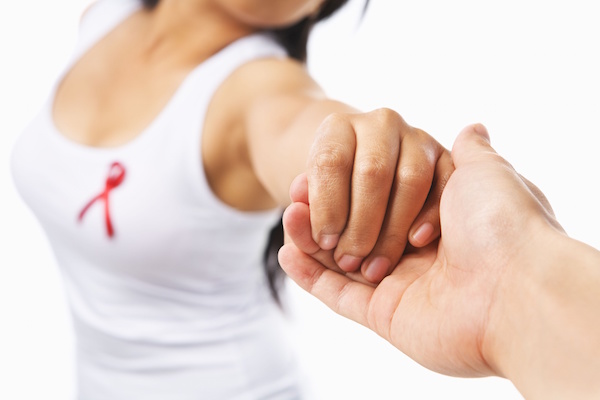
FRIDAY, July 8 (HealthDay News) — Young women say they flock to tanning salons to gain a healthy glow that adds to their natural beauty, protects them from the sun’s rays and fills them with self-confidence.
Except none of it is true or lasting.
A deep tan may help project beauty and confidence for a while, but health experts stress that it will eventually give way to permanent skin damage caused by the ultraviolet rays emitted by a tanning bed — damage up to and including potentially deadly skin cancer.
“We’re seeing more young women with melanoma,” said Dr. Len Lichtenfeld, deputy chief medical officer for the American Cancer Society. “Based on recent research, we believe it is linked to use of tanning beds.”
Also, any notion that a “base tan” can protect a person from a nasty sunburn is just plain wrong, he said.
“There is no such thing as a safe tan,” Lichtenfeld said. “A tan is the body’s attempt to protect itself from something harmful.”
And though most people spend more time in the sun during the summer months, exposure to ultraviolet light has become increasingly a year-round danger.
“The bottom line is excessive UV exposure increases your risk of skin cancer, whether you are indoors or outdoors,” said Dr. James Spencer, a dermatologist in St. Petersburg, Fla., who’s on the board of directors of the American Academy of Dermatology.
Tanning beds have become a particular hazard. The World Health Organization’s International Agency for Research on Cancer has classified the devices as within its highest cancer risk category — basically as potentially carcinogenic as cigarettes.
Nonetheless, about a third of the 3,800 young women questioned in an American Academy of Dermatology survey released in May said they had visited a tanning salon within the previous year. About a fourth said they used indoor tanning beds at least once a week.
The survey also found that 81 percent of the young women said they also tanned outdoors, either frequently or occasionally.
Exposure to UV light at a relatively young age appears to come at a cost. The World Health Organization released a study that found a 75 percent increased risk for melanoma in people whose first exposure to a tanning bed occurred before age 30, Lichtenfeld said.
Researchers also have found an increase in melanoma occurrence on specific parts of the body, particularly the chest and trunk. “They believe it’s due to the widespread use of tanning beds,” Lichtenfeld noted.
College-age women are most at risk for UV exposure through indoor tanning. The American Academy of Dermatology survey found that women 18 to 22 years old were almost twice as likely as 14- to 17-year-olds to have used a tanning bed.
These women are responding to a message that permeates modern society, Spencer and Lichtenfeld said.
“It’s a societal norm that a tan is attractive and desirable,” Spencer said. “People like how it looks. They’re worried about the prom this weekend.”
Add to that the perception of invincibility that young people share — the idea that nothing can harm them, so there’s no reason why they shouldn’t use a tanning bed to turn their bodies bronze.
“They don’t connect tanning at age 17, 18, 19 with what’s going to happen to them at age 40,” Lichtenfeld said.
The true irony, experts agree, is that tanning may indeed help them look and feel beautiful when they’re young, but it will cause their looks to deteriorate as they grow older.
“UV light causes wrinkled, leathery skin,” Spencer said. “It’s not a consequence of age. Their tan might last a week or two, but they will have wrinkles earlier.”
Proponents of healthy skin have tried educating young women about the risks associated with tanning bed use, but many now believe that legislation may be needed to protect them.
Lichtenfeld said he believes that lawmakers should undertake legislation to restrict access to tanning beds for anyone younger than 18. Laws also should be considered, he said, to tighten regulation of the devices, including how much UV light they emit and the length of exposure during a tanning session.
“One would prefer not to have to legislate, but when a risk has been identified and defined, it sometimes is necessary,” he explained.
The risk, though, extends beyond tanning beds, and beyond the reach of legislation. Young and old alike need to protect themselves during outdoor pursuits, when they’re exposed to the natural UV light of the sun.
Sun-safety tips from Lichtenfeld and Spencer include:
- Use plenty of sunscreen. “People don’t use enough,” Lichtenfeld said. “Reapply it regularly, particularly if you are sweating or in the water, and use a broad-spectrum sunscreen that protects against UVA and UVB.”
- Stay indoors during peak sun hours. That’s usually between 10 a.m. and 4 p.m. “If you could play your game of tennis at 9 a.m. versus noon, the sun’s rays are less intense at that hour,” Spencer said. “Enjoy your game of tennis earlier.”
- Wear protective clothing. Light, long-sleeved shirts and wide-brimmed hats will shade the sun. “Not a baseball hat,” Lichtenfeld said. “They leave the back of the neck and the ears still exposed.”
- Wear sunglasses. They protect the eyes from UV light damage.
In other words, they stress, enjoy yourself outside — but be smart about it.
“I’m all for outdoors and sports and enjoying life,” Spencer said. “I’m not telling anyone to hide in a cave. But I would say take common-sense protective measures.”
More information
The Nemours Foundation offers information for teens on the risks of indoor tanning.
For more on what can happen as a result of UV exposure, read about one woman’s story.

